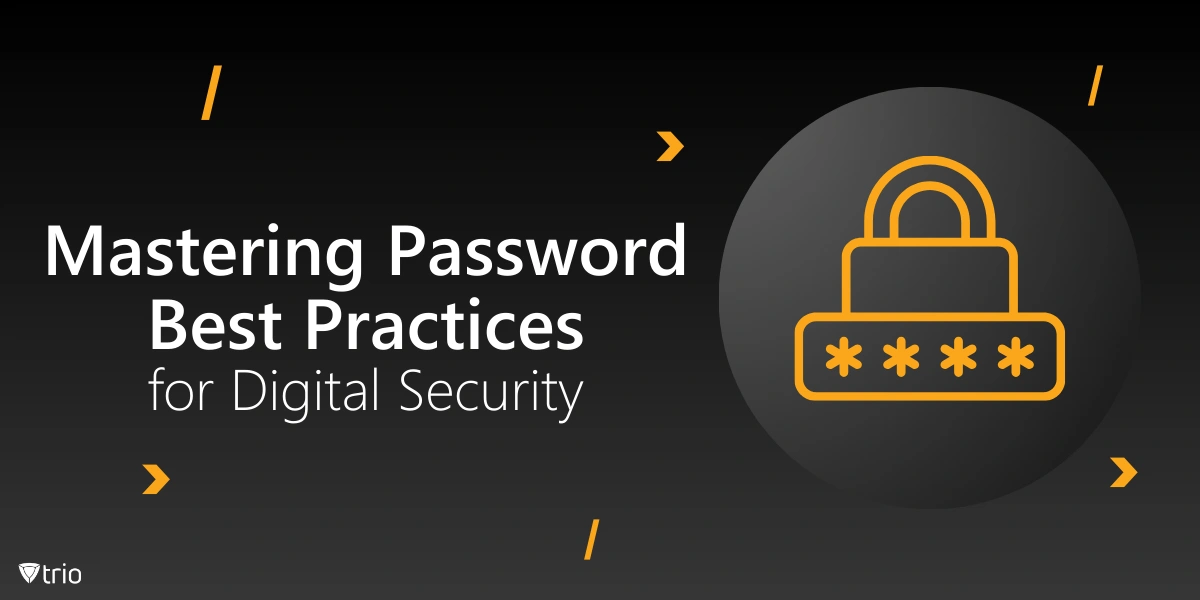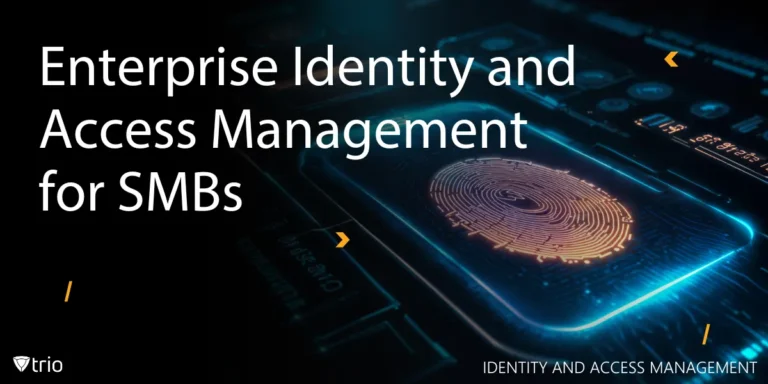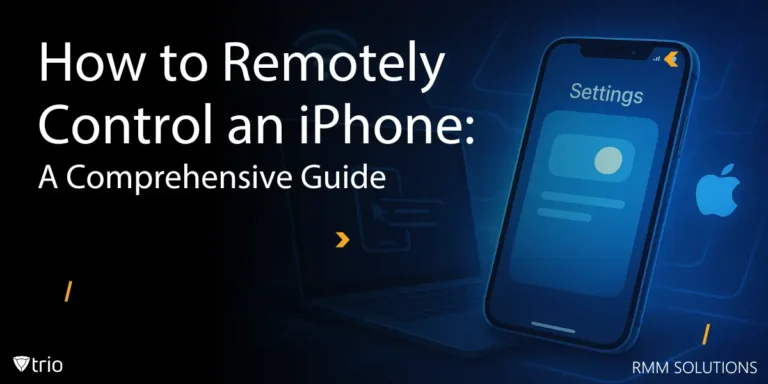Strong passwords are the bedrock of digital security, acting as the first line of defense against unauthorized access to your digital life. This foundational role is crucial, especially in a world where cyber threats are an ever-present danger. Good password practices are essential in IT risk management, ensuring that your mobile security and digital assets remain under lock and key.
The Battle Against Cyber Threats
The rise of cyber-attacks highlights the need for effective password practices. Statistics show that compromised passwords were responsible for 80% of all data breaches in 2019, causing significant financial losses. Despite this, a staggering number of individuals continue to reuse passwords at work and home, amplifying the risks. Implementing password best practices, such as creating strong passwords that incorporate letters, numbers, and symbols, and adhering to regular password resets, can dramatically mitigate these risks.
The Power of Strong Password Creation
A strong password is your shield against cybercriminals' attempts to infiltrate your private data. Creating a password that is both secure and unique is simpler than you might think. A passphrase, for example, can be a more memorable and secure alternative, combining length and complexity to fortify your digital defenses. Moreover, embracing technologies like password managers and Multi-factor Authentication (MFA) can streamline password management while bolstering your security posture.
In a digital age defined by online threats, embracing these password best practices is not just advisable; it's imperative for safeguarding your and your organization's digital assets.
Decoding Password Vulnerabilities
Adopting strong password practices is key to fortifying your online security. Let’s take a look at some of the things that make passwords weak.
Common Password Mistakes
People often trip up by opting for easy-to-remember passwords, a practice ripe for exploitation. Using personal details or sticking to simplistic, familiar sequences makes passwords predictable. Cybercriminals are adept at piecing together your information from what you share online, turning seemingly innocuous details into keys that unlock your digital life.
Risks of Weak Passwords
Weak passwords are akin to leaving your digital doors unlocked. Such vulnerabilities not only make hacking a breeze but also pave the way for severe data breaches. With brute force attacks, hackers deploy algorithms that rapidly guess combinations, making commonly used passwords particularly risky. Phishing attempts trick individuals into willingly handing over their credentials, and credential stuffing attacks automate the process of trying out stolen username and password pairs across various platforms. This cocktail of risks underscores the importance of strengthening your password game to protect personal and corporate data alike.
Crafting longer passwords and shunning previous, commonly used ones can significantly bolster your defenses. The inclusion of letters, numbers, and symbols in unpredictable sequences makes your passwords tougher to crack. Best password practices advocate for a mix of complexity and uniqueness, deterring brute force attacks and shielding against the ramifications of data breaches. Password security best practices, including regular updates and the avoidance of repetitive passwords, play a pivotal role in safeguarding your digital footprint against unauthorized access.
Password Best Practices for Optimal Protection
By following these guidelines, you can significantly bolster your digital defenses against potential cyber threats.
How to Make Strong Passwords
To thwart attackers, create strong passwords by integrating a mix of uppercase and lowercase letters, numbers, and symbols, ensuring a best password length of at least 12 characters—14 or more enhances security significantly. Best password examples are random and unpredictable; avoid simple sequences or personal information that can be easily guessed. Utilize password generators for creating complex passwords and ensure they are distinctly different from previous ones to maintain security integrity.
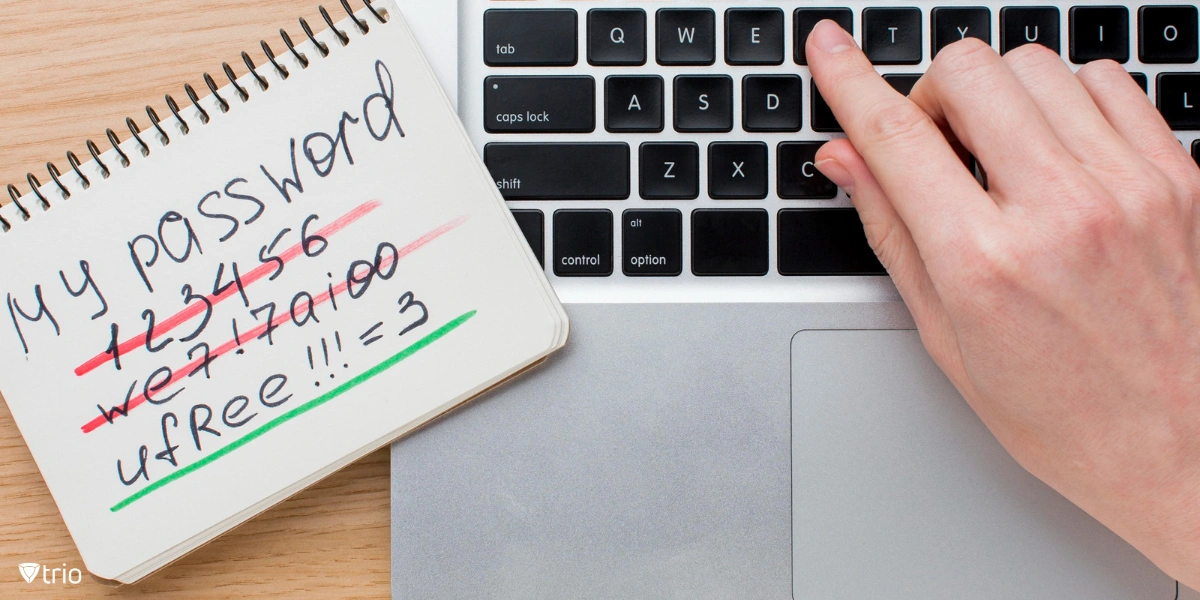
How to Manage Your Passwords: Best Practices for Password Managers
Password managers are instrumental in generating, storing, and handling secure passwords. They relieve you from memorizing each password by safely storing them in encrypted vaults. With features like customizable password generators and secure sharing, password managers like LastPass provide a streamlined approach to password management, enhancing your digital security without compromising convenience.
Routine Password Maintenance
Regularly updating passwords and effectively managing them are crucial practices for sustained security. Adopt password change frequency best practices and a robust password changing policy to minimize risks. Password managers can aid in managing the complexities of password maintenance, including tracking login attempts and helping with data loss prevention. Implementing enterprise password management best practices, such as utilizing master passwords and adhering to complexity requirements, strengthens protection against unauthorized access.
Beyond the Basics: Advanced Security Strategies
Employing these advanced security strategies, which are some of the best practices for password security, complexity, and spyware protection, not only fortifies your digital presence but also significantly reduces the risk of unauthorized access to your sensitive information.
The Importance of Multi-Factor Authentication (MFA)
MFA is crucial because it adds extra verification steps beyond just the password, significantly enhancing security. With over 15 billion stolen credentials available to cybercriminals, MFA makes unauthorized access to your data much harder. By requiring something you know (like a password) and something you have (such as a phone) or are (like a fingerprint), MFA ensures that your data becomes a less attractive target for thieves.
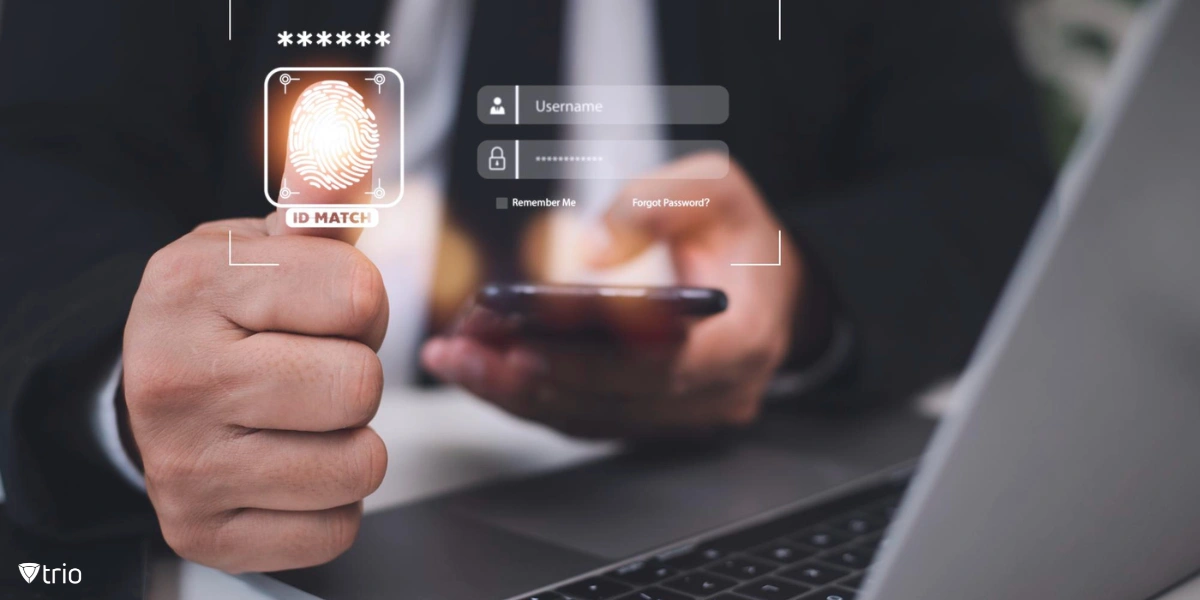
Utilizing Biometric Authentication
Biometric authentication provides a secure and convenient way to protect digital accounts and devices. By using unique physical characteristics, such as fingerprints or facial recognition, biometric authentication adds a layer of security that is difficult for attackers to replicate. This method is increasingly integrated into MFA systems, offering a seamless user experience without compromising on security.
Leveraging Technology for Enhanced Security: How Trio Can Help
Leveraging the advancements in password security can be challenging, but our Trio solution simplifies this. Trio is designed to seamlessly integrate with your organization's security protocols, bolstering password best practices and advanced security measures. It ensures adherence to the best practices for password security, complexity, and protection against spyware. For a firsthand experience of how Trio can elevate your digital security, we invite you to explore a free demo. See the solution in action and discover the ease with which you can enhance your organization's security.
Final Insights
Securing your digital environment is paramount. This journey begins with adhering to robust password safety tips and safeguarding personal data through enhanced practices. We've explored various strategies to fortify your digital defenses; now, it's time to put this knowledge into action. Our Trio solution can be a cornerstone in achieving this goal. By taking advantage of our free demo, you're not just learning about our capabilities; you're taking a significant step towards comprehensive digital security. Embrace this opportunity to elevate your security posture and protect your digital world.
Get Ahead of the Curve
Every organization today needs a solution to automate time-consuming tasks and strengthen security.
Without the right tools, manual processes drain resources and leave gaps in protection. Trio MDM is designed to solve this problem, automating key tasks, boosting security, and ensuring compliance with ease.
Don't let inefficiencies hold you back. Learn how Trio MDM can revolutionize your IT operations or request a free trial today!
